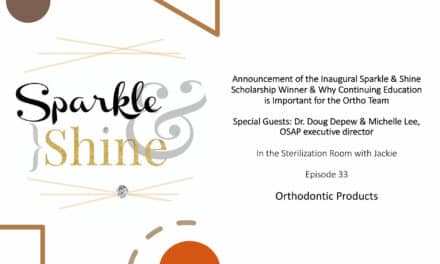How to create an attractive workplace culture and use technology to both retain staff and manage staffing shortages.
By Leon Klempner, DDS, and Amy Epstein, MBA
It’s been called The Big Quit or even The Great Resignation. People have discovered a newfound freedom—after desperately working to hold on to their jobs during the pandemic—in up and quitting their jobs if things don’t satisfy them. Or they are taking part in a phenomenon called “Quiet Quitting,” where people do the bare minimum at work and not one thing more than their job description requires. They are unengaged and not willing to go above and beyond for the company they work for. A recent Gallup poll says at least 50% of the U.S. workforce can be described as “quiet quitters.” The younger the worker the less they feel engaged.
“Since the pandemic, younger workers have declined significantly in feeling cared about and having opportunities to develop—primarily from their manager,” Gallup says in their 2022 report.
That’s right, nobody is sticking around for the gold watch anymore and no industry is immune to the effects, including orthodontics. And with a historically tight job market things probably won’t be getting better anytime soon.
The U.S. Chamber of Commerce put out a report in August 2023 that outlined the factors contributing to America’s labor shortage, saying companies are “facing unprecedented challenges trying to find enough workers to fill open jobs.”
“Right now, the latest data shows that we have 9.8 million job openings in the United States, but only 5.9 million unemployed workers,” the report said.
Drilling down to our industry, there are over 18,660 orthodontic assistants currently employed in the US, but there were 55,933 active orthodontic assistant job openings in 2022, according to job-seeker website Zippia.
That’s quite a mismatch!
Now look at this startling fact: A 2022 survey by Dental Post found that 32% of dental employees will apply for a new job within one year.They told researchers that the main reasons that they are dissatisfied were low wages and feeling underappreciated or limited in their careers.
As an orthodontist running your own practice, you can fully understand the significant impact that a well-trained and dedicated team can have on the success of your business. In today’s dynamic job market, turnover and a shortage of qualified candidates can be daunting challenges to face. The reality is, you’re going to have to embrace this change if you want to tackle this challenge.
As CEO Magazine put it, “companies are now faced with a dual challenge—attracting top talent to join their organizations while providing enough motivation to retain their best employees.”
To overcome these hurdles, a two-fold strategy is essential: fostering a positive workplace culture to attract and retain talent, and embracing technological advancements to reduce reliance on labor.
Create an attractive workplace culture
If you want to attract top talent (and who doesn’t?), you’re going to need to make sure you’re paying attention to how your practice operates. It’s not just about salary and benefits. According to Gallup’s State of the American Workforce report, companies with engaged workforces are 21% more profitable and companies with highly engaged employees outperform their competitors by 147%.
You have to make your practice not only the place people want to get their teeth straightened but also the one people want to work for. There are several ways to do that.
Invest in your practice culture: Developing a positive and supportive work environment is crucial in attracting and retaining top talent. Cultivate a workplace culture that promotes open communication, teamwork, and mutual respect among all staff members. Recognize and reward exceptional performance to motivate your team and make them feel valued. A study done by Quantum Workplace showed that 66% of employees said good workplace culture positively impacts their work and behavior every day, increasing engagement at work. To do this, your team must feel they know how they are contributing to the overall success of the practice within their specific roles and they must trust leadership—that starts with, but is not limited to, the doctor. Your employees also have to know who they can turn to when they need clarity and direction and they have to trust their fellow colleagues. Don’t punish your employees for their mistakes. As we like to say, “build an environment where team members feel supported in their failures, and it will lead to greater levels of success.”
Competitive compensation and benefits: Salaries have increased 11% for orthodontic assistants in the last 5 years but inflation has risen 19.1% in the same timeframe. Offering competitive salaries and benefits is still an effective way to entice qualified candidates and retain experienced staff. You would do well to research industry standards for compensation and consider offering more perks like health insurance, retirement plans, paid time off, and continuing education opportunities. A tight labor market means workers are in control and compensation is a supply and demand aspect to employment. People are demanding more, especially if they are expected to come into the office to perform their jobs. If you’re not experiencing the type of shortage of workers other practices have, that doesn’t mean you won’t in the future. Paying more to keep high-functioning team members is always less expensive than training someone new.
Appealing to the new workplace mindset: As the workforce demographic shifts, appealing to the new way people want to work becomes essential. It’s not just the millennial generation who demand a better work-life balance and a sense of purpose in their jobs. This is prevalent among most employees. (Did living through a global pandemic give people the kick-in-the-pants they need to slow down and smell the roses? Perhaps.) Provide opportunities for personal and professional development, and consider implementing flexible work arrangements whenever possible. Even with a hands-on industry like orthodontics, you can offer some work-from-home opportunities to employees. Overall, 68% of Americans say that they would prefer to be fully remote workers, even if that meant a pay cut to do so. While that might not be possible in every role in the practice, we can offer hybrid-work and flex options instead.
Embrace technology: Incorporate modern technologies into your practice to streamline processes, enhance patient care, smooth communication between peers and with patients, and make the workplace more attractive to potential employees. Digital advancements can improve efficiency and help retain tech-savvy staff who appreciate a technologically advanced workplace. New technology can also help reduce your reliance on staff if they do leave.
Using technology to manage talent shortages
Here are strategies for incorporating technology into your practice to streamline processes to not only help retain staff but also ensure continuity if they do leave.
Reduce your reliance on labor: The digital practice: It’s been talked about ad nauseam. Upgrade your technology and workflows, incorporate more digital technology and watch your reliance on labor as a ratio to the number of patients you can treat drop exponentially. For the doctor, it’s an upfront investment that can pay dividends over time. While not a catchall solution to the labor market shortage, there are some strategies and tech you can adopt that will help you greatly reduce your need to keep hiring staff as your practice grows. (We’re assuming you also want to grow your practice!)
Adopt teledentistry and remote monitoring: Embrace technologies that use state-of-the-art AI functionality like teledentistry to remotely monitor patients’ progress, reducing the need for frequent in-person visits. This can also help to optimize chair time and alleviate the workload for your team. The data you collect through technology can help you target inefficiencies in your practice and become more agile. It will also allow you to respond to patient needs faster, saving valuable time and allowing you to offer flexibility for team scheduling. It will also eliminate wasteful time spent by your team. In our Golden Age of Orthodontics podcast episode where we interviewed Barry Benton, DMD, MSD, from Designer Smiles by Benton, he told us that DentalMonitoring’s dynamic scheduling software helped him maximize doctor time across two offices, allowing his practice to maintain its current work schedule while actually seeing more patients all while delivering the same quality of care. The right tech can increase profitability. The money you save can be put back into your team in the form of raises and other perks and allow you to attract top tier talent.
Assess and streamline workflows: Conduct a thorough assessment of your practice’s workflow to identify areas that can be streamlined and made more efficient. Utilize automation and digital solutions to reduce the need for manual tasks, which can alleviate the burden on your staff and create a more efficient operation. Technology can be used to automate repetitive and simple tasks freeing up your staff for more important jobs. You need to revisit how your practice operates and question whether you can make things easier or more efficient. Simplifying processes and procedures can help reduce confusion and errors, while increasing speed and accuracy. The AI-driven insights you gain with a tech platform like DentalMonitoring provide data on how your team is performing so you can celebrate outstanding work and enhance communication. It also gives both the leadership and staff a shared understanding where opportunities for improvement exist.
Consider remote work: Explore the possibility that certain administrative or marketing functions can be done by people who don’t need to be in the office every day—or at all. Communication technology has allowed us to log in from almost anywhere to get the job done. There are many tasks that could be outsourced to technology or remote workers like checking insurance, submitting claims, and managing your recalls, just to name a few.
The challenges of turnover and a dearth of qualified candidates can be addressed through a proactive approach that encompasses both improving the workplace culture and embracing technological advancements. By investing in your team, offering competitive benefits, and implementing modern solutions, your orthodontic practice can not only survive but thrive in a competitive job market. Embracing change and staying up-to-date with industry innovations will position your practice as an attractive employer and create a more efficient and sustainable operation for the future. OP

Leon Klempner, DDS, and Amy Epstein, MBA, are co-founders of People + Practice, an orthodontic marketing agency on a mission to unveil the abundant opportunities for orthodontic practices to thrive by implementing digital marketing strategies, technology, and services that fuel practice growth. They also host The Golden Age of Orthodontics podcast, dedicated to highlighting the most innovative technologies and approaches in the industry. To schedule a complimentary consultation or to learn more, visit pplpractice.com.










